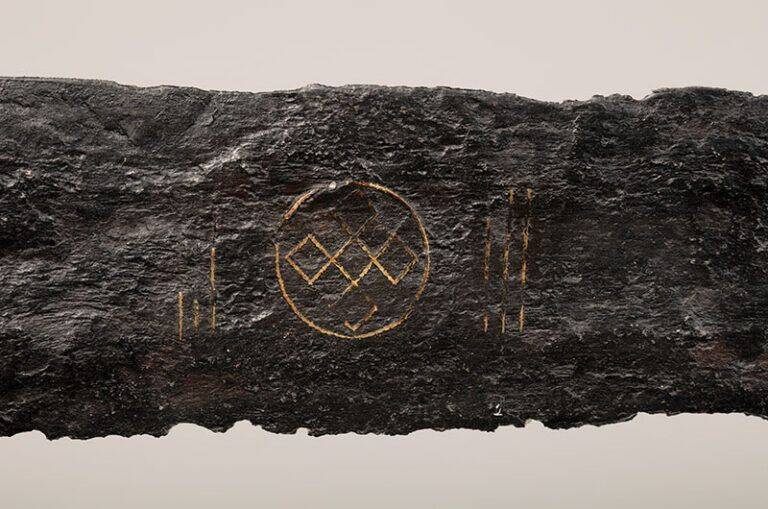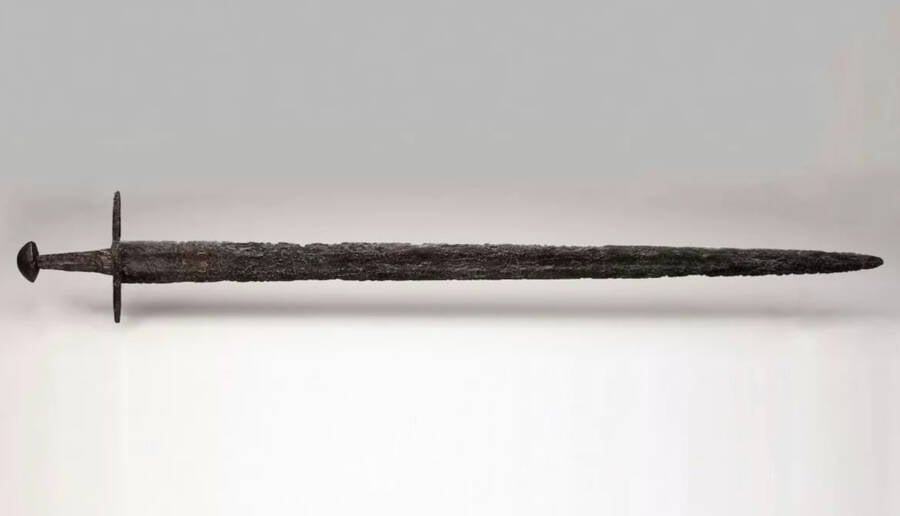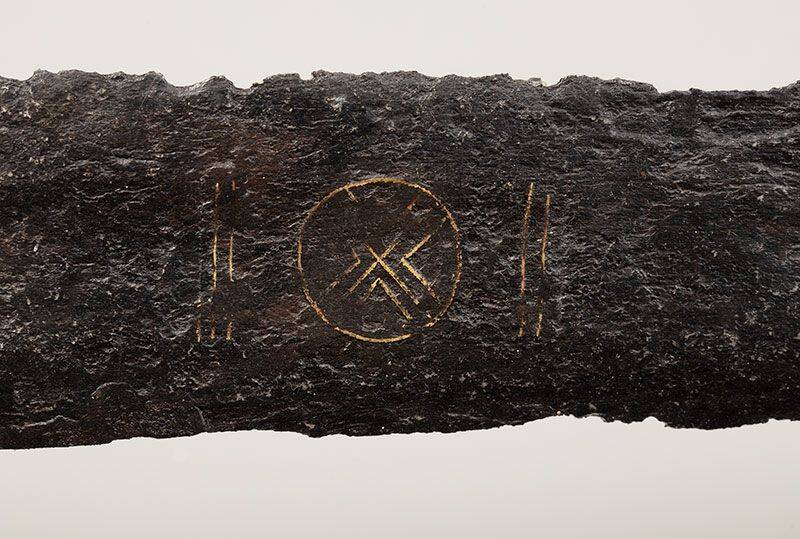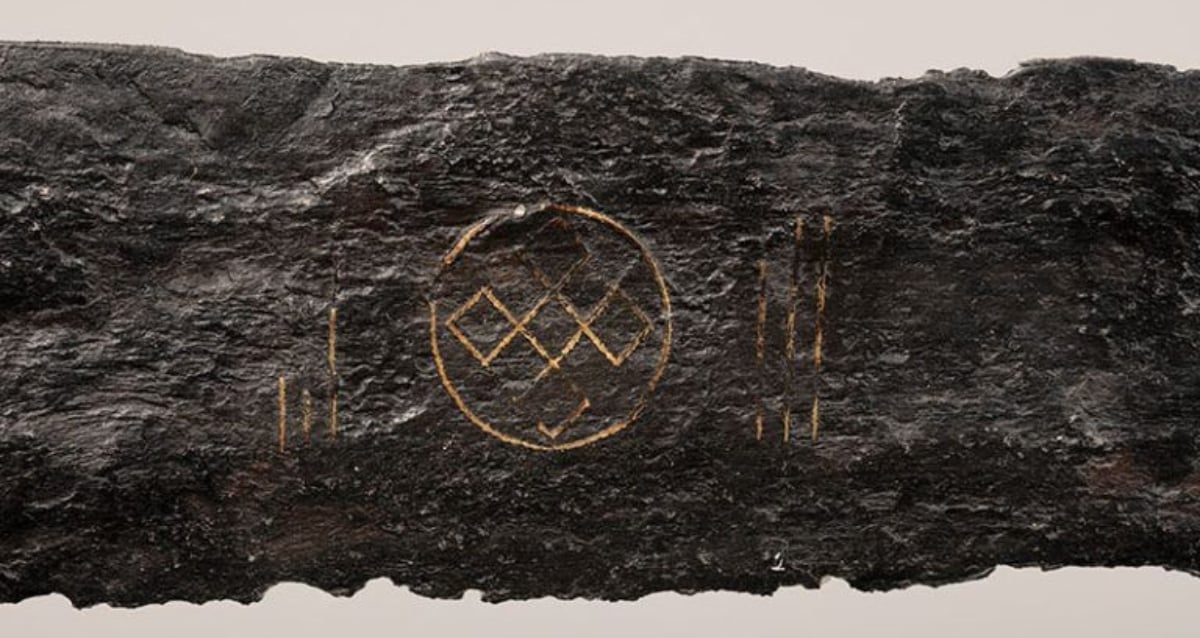Mystery Unveiled: Medieval Sword with Enigmatic Viking Inscription Discovered Beneath Dutch River
Ever wonder what exactly might be lurking in a muddy riverbed just waiting for someone to stumble upon it? Well, during some totally routine dredging in the Korte Linschoten River (yes, that’s a real place, not a fantasy novel setting) in Montfoort, Netherlands, workers yanked up a three-foot sword wrapped in centuries of sludge—and get this—it’s about 1,000 years old and nearly flawless. I mean, who just tosses a perfectly sharp medieval sword into a river and walks away? This isn’t just any old rusty relic; the blade is decorated with an “endless knot” symbol—an emblem tied to Viking and early Germanic mysticism—still boldly etched after ten whole centuries. So what’s the story behind this blade, and why did it end up abandoned underwater? It’s like the universe handed us a million-dollar riddle wrapped in iron and mystery. Curious? You should be. LEARN MORE
During routine dredging of the Korte Linschoten River in Montfoort, Netherlands in 2024, workers noticed something sticking out of the bucket of sludge they’d just pulled up from the depths — and it turned out to be a completely intact three-foot sword.

Ruben de Heer/National Museum of AntiquitiesThe engraved endless knot symbol on the so-called Linschoten sword.
Routine dredging work in the Netherlands’ Korte Linschoten River in March 2024 led to the discovery of a rare, 1,000-year-old sword with an “endless knot” motif engraved on its blade.
The symbol is associated with Viking and early Germanic traditions, representing unbreakable bonds, spiritual unity, and the interconnectedness of all things. Despite the sword’s age, the pattern is still clearly visible — poetic, given what the symbol represents.
In the year since it was found, experts have carefully cleaned, studied, and preserved the blade, which was transferred to the National Museum of Antiquities for display in May 2025.
A Rare Medieval Sword With Sacred Symbols Is Found In The Netherlands
On March 1, 2024, a dredger brought up a heap of clay during work to deepen the Korte Linschoten River in the Dutch province of Utrecht. Protruding from the clay was a long metal object, closer inspection of which revealed it to be a roughly three-foot sword.
During cleaning and research, experts found that the blade was likely forged between 1050 and 1150 C.E., based on the sword’s broad crossguard and Brazil nut-shaped pommel. Despite its age, though, the sword was in a remarkable state of preservation, with only the organic components — a wooden handle and leather wrappings — in any notable state of decay.

Ruben de Heer/National Museum of AntiquitiesThe full sword, still in an exceptional state of preservation.
X-ray examination showed, in fact, that the iron blade has barely corroded at all. It is still sharp on both sides, and the gold-colored inlay is clearly visible, showcasing circular patterns featuring a cross on one side and the “endless knot” symbol on the other.
The endless knot, while often associated with Celtic and later Viking art, also found its place in the broader artistic currents of medieval Europe, including the territories influenced by Germanic styles. This intricate, unbroken pattern symbolized concepts of eternity, continuity, and the interconnectedness of existence.
For the people of 11th-century Utrecht, a society where Christian beliefs were deeply interwoven with older traditions, the endless knot could have resonated with ideas of everlasting faith, the cyclical nature of life and death, or the unbreakable bonds of community. Its presence on this sword only reinforces these ideas.

Ruben de Heer/National Museum of AntiquitiesThe pattern represents a blend of Christian and pagan traditions.
As for the sword’s exceptional state of preservation, experts credited the oxygen-poor soil of the wet riverbed.
They also determined that the sword had been discarded without its scabbard, given that there were no signs of one anywhere nearby. This could indicate that the blade was deliberately placed in the river, possibly for a ritual purpose.
“Medieval swords are very personal possessions: they were buried with the owner or (alternatively) ‘sacrificed’ in the water. There they were often exceptionally well preserved. It is therefore a golden opportunity when one surfaces centuries later,” a translated statement from the museum reads.
The History Of Swords In Medieval Utrecht
In the 11th century, the city of Utrecht, located in the heart of what is now the Netherlands, was a pivotal center of power, commerce, and religious influence.
As the seat of the powerful Prince-Bishopric, Utrecht was a flourishing principality, governing a significant portion of the northern Low Countries. Its strategic position along the Rhine River, even as the river’s course was being actively managed and altered, ensured its role as a crucial trade hub.
Perhaps no type of object revealed more about the values of this time and place than the sword.
In 11th-century Utrecht, a sword was far more than just a weapon — it was a potent symbol of status, power, and wealth. Crafting a sword was a highly skilled and labor-intensive process, demanding expertise in metallurgy to forge a durable and effective blade. As such, swords were not commonplace possessions.



















